#nonnative plants
Text

The little naturalized snowdrops along the stream in the woods are blooming now. They always bloom well after mine.
2K notes
·
View notes
Text


Someday I hope to see this plant - our Wednesday's weed - in its native range in eastern Europe and north central Asia, because it's a shame something so pretty does so much damage! If you live in the American west you're probably familiar with this plant, Halogeton glomeratus, called saltlover. It can grow in disturbed areas where native plants struggle to take hold, and is perfectly happy growing in salty, briny, and alkaline locations. Once it's taken hold, it's really hard to fully remove, because it produces a lot of seeds and concentrates mineral salts in such a way that it makes its surroundings inhospitable to other plants. Worse, it's very toxic to livestock like sheep, and has killed entire herds in the past.
I found this plant at Dead Horse Point in Utah, USA. It's a little more plain when it's not flowering or going to seed, looking more like an amaranth/pigweed.
51 notes
·
View notes
Text
Lantana Flowers are Beautiful and Come in Many Colors
Lantana Flowers are Beautiful and Come in Many Colors features a particularly brightly colored type of lantana flowers that the author/artist found growing out in the country. It discusses the pros and cons of this plant in central Florida.
Resplendent
Lantana (Lantana camara) flowers tend to be a favorite amongst gardeners due to their variety of colors and their hardiness. Some people also know these beauties as common lantana, red sage, Spanish flag, or West Indian lantana. It comes in quite a few serovars that have different color combinations and varying levels of color intensity. I’m not sure which type this one is, but in my…

View On WordPress
#beautiful flowers#beautiful lantana#colorful flowers#colorful lantana#common lantana#fall flowers#Florida flowers#flower photographs#flower photography#flowers#invasive plants#lantana#lantana flowers#lantana photographs#nonnative plants#photography#red sage#Spanish flag#West Indian lantana
11 notes
·
View notes
Text
its very amusing to me when skilled horticulturists know fuckall about native plants
#personal#referencing the bonsai meeting earlier - i was complimented on my juniper and asked the species#species is juniperus virginiana. of which the common name is eastern redcedar. it is not a cedar.#i told her the common name to which she immediately said “nono... maybe nana juniper?” to which an onlooker disagreed#as did i considering i have a nana and they look nothing alike#and im like “i dug this tree up from my yard. its a seedling from our adult trees. the other tree i brought in today is the same species.”#she did not understand this and kept suggesting things#like this is a tree native to my area that i dug up from my yard. not a nonnative ornamental that was planted intentionally.#i didnt think to mention that it is in fact a juniper because im autistic and bad at thinking of things like that in the moment#anyway. funny in the moment sort of irritating in hindsight
19 notes
·
View notes
Text
Simple lifeform facts I take for granted that I've now seen blowing people's minds on here:
That sea urchins walk around and have mouths with teeth on their undersides
That corals are related to jellyfish
Barnacles being related to crabs and shrimp
Ants being an offshoot of wasps
Termites being totally unrelated to ants and all similarities just being convergent evolution (they're actually a group of cockroaches, but even science didn't know that part until a few years ago)
Starfish having an eye at the end of each arm
That the bodies of ticks and mites are also their heads, essentially big heads with legs (they even frequently have eyes way up on "the body")
Sperm whales have no upper teeth, and also their bodies are flat from the front
Goats also having no upper (front) teeth
Tapeworms having no mouth at all and just absorbing nutrients over their entire body surface
That flies are bigger pollinators than bees
That moths are bigger pollinators than bees
That wasps are just as important pollinators as bees (more important to many groups of plants) and when we say they're "less efficient" at it we just mean individually they get a little less pollen stuck to them.
That honeybees are nonnative to most of the world and not good for the local ecosystem, just good for human agriculture
That earthworms are also nonnative and destructive to more habitats than the reverse
There being no hard biological line between slugs and snails; all slugs aren't necessarily related to each other and there are gastropod groups where some have shells and some don't
That ALL octopuses (not just the blue ring) have a venomous bite
Most jellyfish and sea anemones being predators that eat fish
"Krill" being shrimp up to a few inches long and not some kind of microbe
Blue whales therefore being the deadliest predators to ever evolve as they eat up to several million individual animals per day
That krill are still "plankton" because plankton refers to whatever animals, algae and other organisms are carried around by the sea's currents, not to any particular group of life or a size category
Fungi being no more related to plants than we are, and in fact more like a sibling to the animal kingdom if anything
Venus fly traps being native to only one small area of North America in all the world
Parasites being essential to all ecosystems
Leeches not having a circular ring of teeth anywhere
That algae is not a type of plant
That most seaweed is just very big algae
That enough wood ends up in the ocean that plenty of sea life evolved to eat only wood
Speaking of which the fact that the "ship worms" that make tunnels in wood are just long noodly clams
Butterflies technically just being a small weird group of moths we gave a different name to
That insects only get wings once they reach maximum size and therefore there can never be a younger smaller bee or fly that's not a larva
Spiders not being any more likely to kill their own mates/young than just a cat or dog might, for most species maybe a lot less often?
6K notes
·
View notes
Text
Public service announcement: when people say “save the bees” they’re not referring to honeybees. It’s the native pollinators that need saving
#spicy speaks#the general public’s view on bees is so incredibly misguided#honeybees don’t need saving#it’s the native bees#there’s a lot of interesting research out there about it#interestingly enough native bees are more efficient at pollinating native plants#native pollinator numbers are declining and they’re the ones in serious danger#without them so many native plants could be lost#on the other side#honeybees are more efficient to pollinate crops and nonnative/invasive plants#the honeybee vs native pollinator topic is incredibly interesting#I just started learning about it recently
0 notes
Text
I see at least one cool bug a day, and usually many more, but it’s not because I live anywhere particularly rich in strange, wonderful creatures (I live in an unremarkable corner of Pennsylvania, USA) or spend all of my free time looking for bugs (well, just *most* of it). in my experience, finding interesting bugs is less about actually locating them and more about looking closely at tiny things you’d otherwise ignore!
this very long post was compiled over a couple days in late July, although I spent less than 10 minutes at a time searching. there’s a lot of fun creatures just out in the open.

plants are always a good place to start when looking for bugs, and I chose this small fig tree (Ficus carica) with a mulberry sapling friend. feeding on the sap of the fig and mulberry is the first group I’ll take a look at, the planthoppers:

these two are flatid bugs, Metcalfa pruinosa and Flatormenis proxima. flatids are slow-moving bugs that can be approached closely, but once they get tired of circling around stems to avoid you they may launch themselves into a fluttering flight with spring-loaded rear legs.
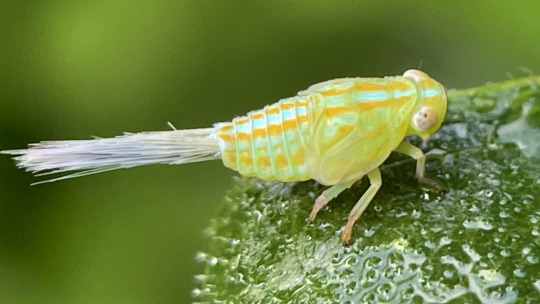
Aplos simplex, a member of the related family Issidae, also likes fig sap. its “tail” is actually a tuft of waxy secretions, which get shed along with the bright colors when it assumes a lumpy, bean-shaped adult form.
cicadellids, or leafhoppers, are just about everywhere on plants, but can be hard to approach without scaring them.


Agallia constricta on the left is a tiny species that feeds on grass, but many were scared up onto the fig by my footsteps. Jikradia olitoria is a much larger species that does feed on the fig; juveniles like this are curled, creeping goblins while adults’ rounded wings give them a pill-shaped appearance.

this big, pale leafhopper belongs to genus Gyponana. it’s tricky to get to species ID with these.
Graphocephala are striking little hoppers that eat a variety of native and nonnative plants. G. coccinea is the larger, more boldly colored one and G. versuta is smaller but more common locally. they’ll sit on the tops of leaves but take flight if you get too close quickly.
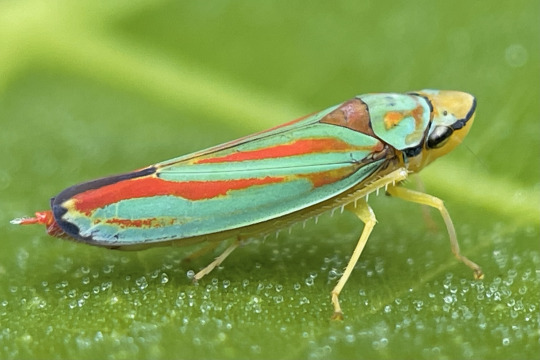
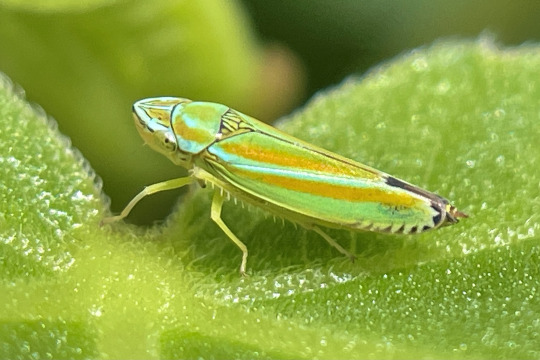
another group you’re almost guaranteed to encounter are flies (Diptera). these are a very diverse group, so much more than houseflies and mosquitoes (though I did run into both)
where I live, any plant with broad leaves is almost guaranteed to have a few Condylostylus, long-legged flies that come in shades of blue, green, and red. despite their dainty physique, they’re agile predators, typically feeding on other small flies.
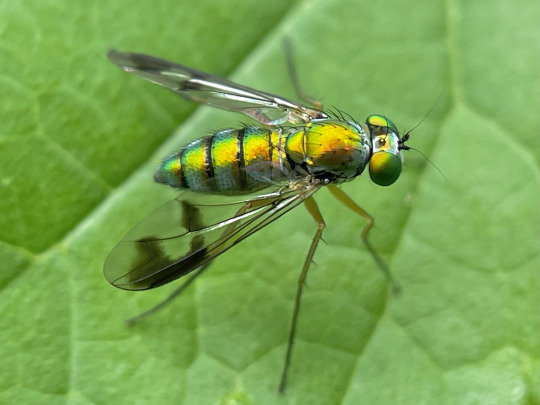
next, a few hoverflies: the ubiquitous Toxomerus geminatus and a Eumerus that I’ve been seeing a lot of this year (but maybe I’ve just noticed them for the first time). syrphids have varied life histories, but most adults drink nectar and many of the larvae are predaceous on aphids.
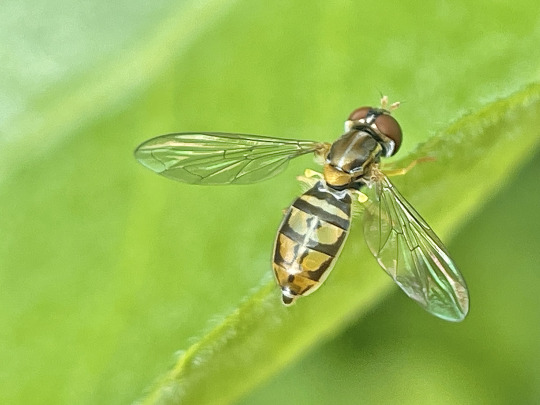
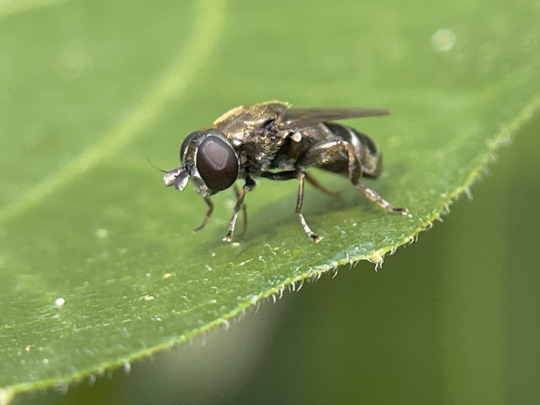
the metallic green soldier fly is Microchrysa flaviventris, nonnative here. Coenosia is a fun example of a “fly that looks like a fly,” with big red eyes and a gray body, and you might think they’re just another dung-sucking pest, but they’re actually aggressive predators! this one seemed to have nabbed itself some sort of nematoceran fly, maybe a fungus gnat.
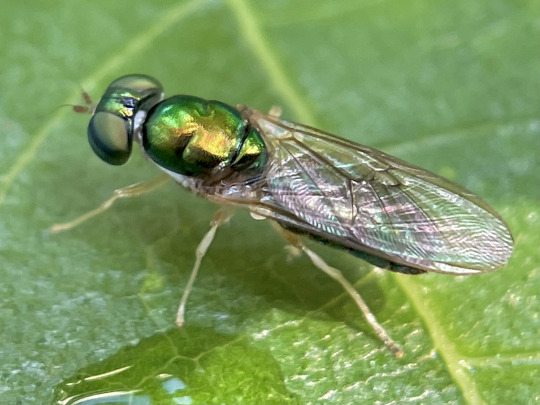

many flies are very tiny, just millimeters long. the first two little fellows are lauxaniids, while the last one, an agromyzid leafminer Cerodontha dorsalis, burrows through grass leaves as a larva.
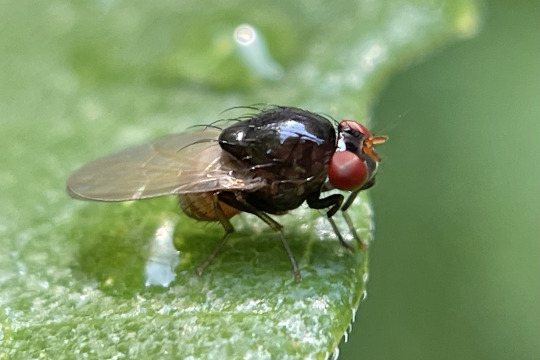
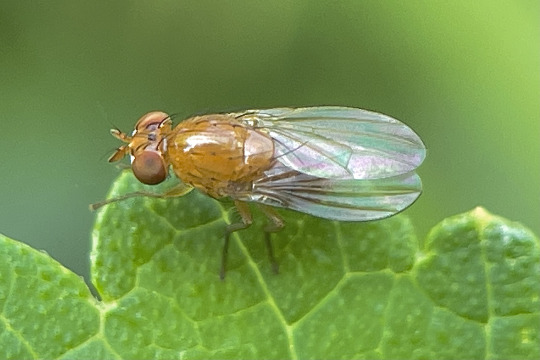

while moths and butterflies (Lepidoptera) are drawn to plants for their flowers or to lay eggs, many small moths can easily be found resting on or under leaves during the day.
these first two are tortricids, many of which are flat, rectangular moths resembling chips of bark or dead leaves. the apple bud moth, Platynota idaeusalis, feeds on a wide variety of hosts, while this beat-up old Argyrotaenia pinatubana would have developed in an edible tube nest of pine needles.


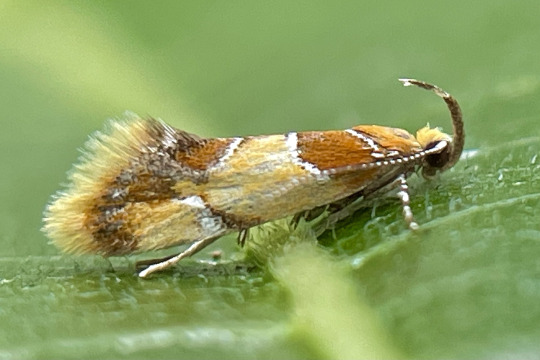
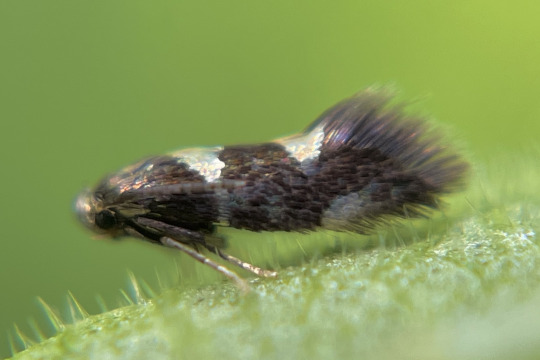
Callima argenticinctella feeds in bark and dead wood (a resource used by more caterpillars than you’d realize!) while the last moth, possibly an Aspilanta, is a leafminer.
although beetles (Coleoptera) are famous for their diversity, I didn’t find too many on the fig. the invasive Oriental beetle Exomala orientalis resting here can be found in a wide range of colors, from this common tan to to deep iridescent black. the other beetle is a Photinus pyralis firefly, sleeping under leaves as fireflies do.
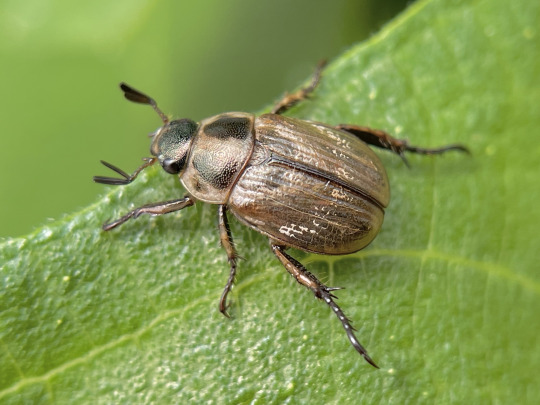

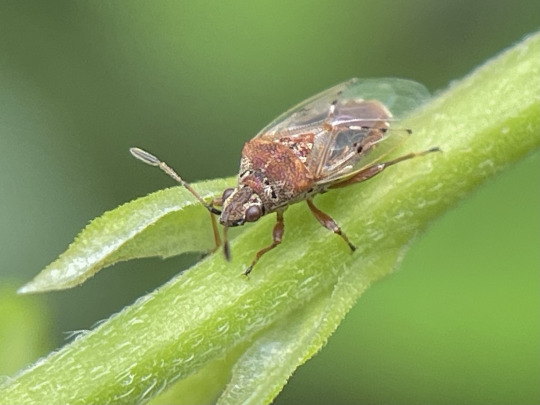
a few spare hemipterans: a Kleidocerys resedae that blew in on a wind, and below, the mulberry whitefly Tetraleurodes mori feeds on its namesake host. as for Hymenoptera, I saw manny tiny parasitic braconid wasps and various ants attracted to the planthoppers’ honeydew excretions—always worth checking underneath roosting hoppers for things having a drink.

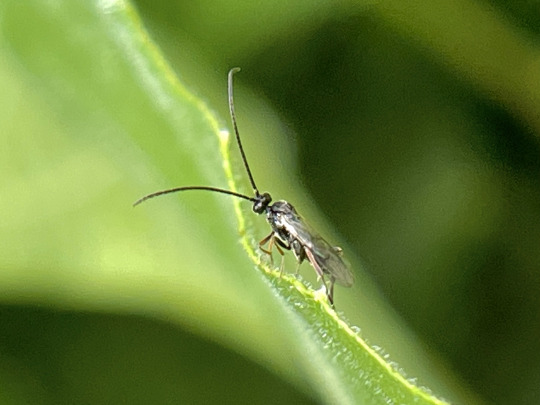
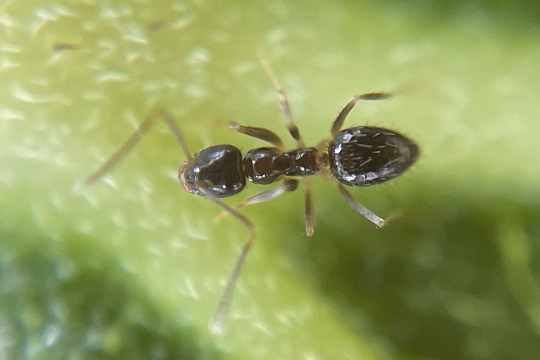
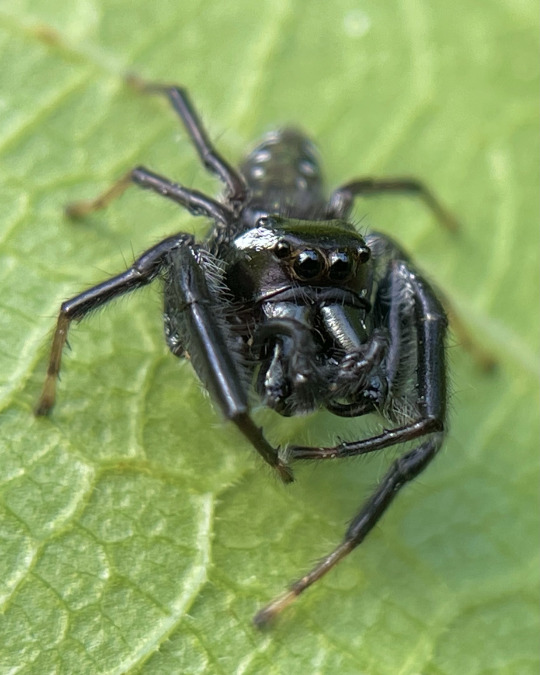
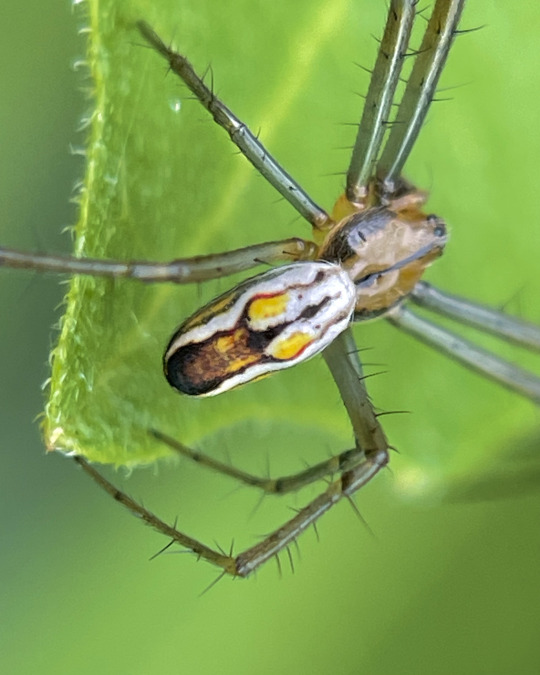
a couple handsome spider boys were scrambling through the fig seeking females, a jumping spider Paraphidippus aurantius and an orbweaver, Mecynogea lemniscata.
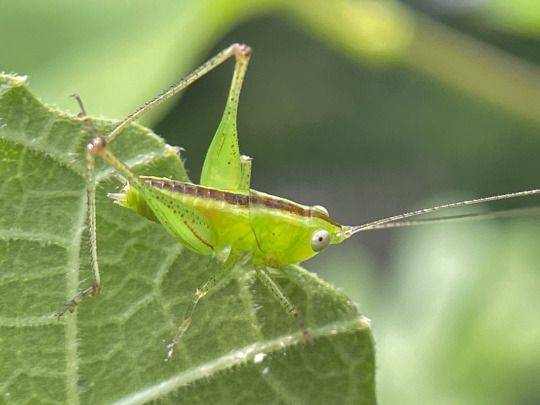
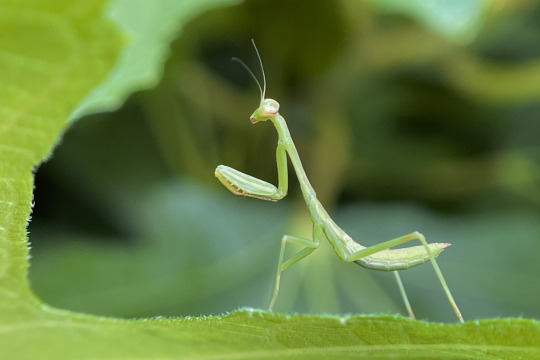
and to round it off, a young Conocephalus meadow katydid and a Carolina mantis, Stagmomantis carolina.
there’s 31 species of arthropod in this post, and I probably saw some 45, not all of which stayed for photos. if you walk slowly and look closely, you can see a sizeable chunk of your local biodiversity in under fifteen minutes! of course this will depend on where you live and what time of year it is, but there’s almost always more cool bugs out there than you’d expect, even on just a single plant.
1K notes
·
View notes
Text
Very tempted to take advantage of the public sidewalk going through my backyard and put anti lawn signs along the sides of it
#if i stay here when my parents find some property to move to im tearing up most of the back patio#and replacing it with a native plant garden#i wonder if i could get them to grow out front too.....the tree and the hill make it hard to grow much of anything#they havent been able to get (nonnative) grass there the whole time we've lived here#the neighborhood landscaping guy has resorted to planting clover there which.....also not native.#and also still a monoculture#if i could replace the whole backyard with native plants i would but i gotta leave room for the lawn mower to go through 🙄
1 note
·
View note
Text
Research by Clay Trauernicht, a fire specialist at the University of Hawaii, and others has shown that the scale and frequency of wildfires have been increasing across in Hawaii from the early 1900s to the 2010s. The researchers also identified a major culprit: non-native plants.
“Wildfires were most frequent in developed areas, but most areas burned occurred in dry non-native grasslands and shrublands that currently compose 24 percent of Hawaii’s total land cover,” the researchers wrote. “These grass-dominated landscapes allow wildfires to propagate rapidly.”
The non-native grasses were brought to Hawaii by cattle ranchers in the 19th century, University of California Santa Barbara ecologist Carla D’Antonio told me. “They were selected because they were drought tolerant.”
They are also invasive. The abandoned sugar and pineapple farms across the state are quickly taken over by non-native grasses. “When the land gets abandoned, the grasses are the first invaders. All you need is a little drought to have a flammable landscape.” Maui is currently in a drought.
The grasses are an especially potent fuel, D'Antonio explained, because they grow quickly when it rains and then stick around, deeply rooted into the soil, as dry, dead organic matter, becoming a “standing layer of very ignitable fuel.”
Then after a fire, these non-native plants tend to do better than native ones, thus increasing future fire risk. Fire “has generally been shown to decrease the abundance of native woody plants because nonnative, invasive, fire-adapted plants out-compete natives for resources in the post-fire environment and tend to dominate post-fire communities,” according to a United States Forest Service review.
490 notes
·
View notes
Text
Making Better State Insects
So at some point I stumbled across a list of State Insects. Honestly I wasn't even aware states had "state insects", but as I looked down the list my disappointment grew. A vast majority of states had selected the European honeybee (which is not even native) as their state insect, with monarch butterflies and ladybugs being the two runner ups. I thought this was a damn shame because there's so many interesting insects in the US, so I'm making a better official new list of state insects.
For this list my criteria are:
Insect must be native to the state
No repeats
Insect must be easily observable to the naked eye
I also had general guidelines of picking insects that were relatively common (based on inaturalist heat maps of observation) and picking insects that were cool or interesting. Some of these insects I picked because I thought they were important parts of the areas culture and experience (lovebugs, toebiters, and periodical cicadas) and some insects I picked just to raise awareness that they exist in the US.
I also don't think I gave anyone huge L's, no mosquitoes, louses, cockroaches, ect, because my goal of this list is to get people interested in their native insects and I want it to be fun to find and observe your state insect.
Also some states get gold stars for picking state insects that already meet these criteria and are cool so they get to keep theirs. Some states also have "state butterflies" or "state agricultural insect" which for this list I'm ignoring, you can keep those I'm just focused on state insects. Slight disclaimer also, I've only ever lived in California, Nevada, Oregon, Washington, and South Carolina, and all these states are keeping their original state insect. So all the insects I'm choosing are for states I haven't lived in. Also I'm not including photos in this post just for my own sanity.
List under the cut!
Alabama
Old: Monarch Butterfly
New: Giant Leaf-footed Bug (Acanthocephala declivis)
Leaf-footed bugs are cute, they're big, they're stanced up, the males have big back legs, you've probably seen them. Being true bugs they have piercing mouthparts and suck plant juices.
Alaska
Four-spot Skimmer (Libellula quadrimaculata)
Alaska gets to keep their old state insect, it's a cool dragonfly and apparently was partially chosen to honor bush pilots who fly to deliver supplies in the Alaskan wilderness, so really cool!
Arizona
Two-tailed swallowtail butterfly (Papilio multicaudata)
Arizona also gets to keep their state insect. Kind of a shame because Arizona has a lot of cool species, but it did meet my requirements and they get points for choosing a different kind of butterfly.
Arkansas
Old: European honeybee
New: North American Wheel Bug (Arilus cristatus)
One of the largest assassin bugs in the US, these guys are appreciated by gardeners for their environmentally friendly pest control. They also look badass.
California
California Dogface Butterfly (Zerene eurydice)
Endemic to California and on a stamp! Again, kind of a shame because there's a lot of cool insects in California, but I respect this choice, especially since California was the first state to designate a state insect (1929).
Colorado
Colorado Hairstreak Butterfly (Hypaurotis crysalus)
Same deal as California, the state's name is in the common name, unique butterfly found in the four corners region. Just get a stamp or something soon!
Connecticut
Old: European Praying Mantis
New: Cecropia Moth (Hyalophora cecropia)
You picked a state insect no one else had but went with a nonnative mantis? Here's an insect that'll make you stand out and it's a native species. Lesser known than some of the other giant silk moths, the Cecropia moth is the largest native moth and has some truly stunning colors.
Delaware
Old: Convergent Ladybeetle
New: Periodical Cicada (Magicicada septendecim)
Cicada's had to be somewhere on this list and Delaware was one of the main hotspots for brood X, one of the largest broods of the multiple staggered brood cycles. Hey, they have a lot of history in America. Accounts go back as early as 1733, with Thomas Jefferson and Benjamin Franklin making a note of them.
District of Columbia
Old: None
New: Monarch Butterfly (Danaus plexippus)
The Entomological Society of America is trying to get the Monarch Butterfly added as our national insect, so I think that's reason enough to let DOC claim it.
Florida
Zebra Butterfly (Heliconius charithonia)
Florida gets to keep their state butterfly, but the populations that have existed in Florida are in steep decline. Ideally I would want being the official state insect to come with some protections, hopefully people can get invested in reintroducing them.
Georgia
Old: European Honeybee
New: Horned Passalus Beetle (Odontotaenius disjunctus)
Also called bess beetles or patent-leather beetles, these cute guys are important for forest systems because they eat decaying wood, helping to break down felled trees. They're cute beetles that squeak when disturbed.
Hawaii
Kamehameha Butterfly (Vanessa tameamea)
An endemic Hawaiian butterfly named after a ruling dynasty of Hawaii. Their population is under threat, as with a lot of native Hawaiian species, so I think this is a good state insect to build protections and activism around.
Idaho
Old: Monarch Butterfly
New: Ice Crawler (Grylloblatta sp. "Polaris Peak")
Look Idaho, I have to admit that even though I've traveled extensively through WA, OR, CA, and NV I've never stepped foot in Idaho and I don't intend to. Your state exists in a weird liminal zone, not really the pacific northwest but not really whatever Montana is either. Your state isn't even all in one time zone. So look, I really wanted ice crawlers to be on this list, but they're exclusively found on mountains in the pacific northwest and Sierra Nevadas. Normally I would've given them to Washington or Oregon, but those states already have state insects that work for them. So your state gets ice crawlers, and they do exist in Idaho in the panhandle. It's not an L, ice crawlers are amazing extremophiles that crawl over snow in high elevation mountain peaks. They exist in their own unique order and theres only one genus in the US, with different species being region locked, sometimes onto specific mountains. Their thermoregulation is so delicate, the warmth of someones hand holding them causes them to over heat and die. They're cool, unique, and weird, and let's face it so is your state. At least I didn't take a cop out by picking the potato bug.
Illinois
Old: Monarch Butterfly
New: Red-banded Leafhopper (Graphocephala coccinea)
Leafhopper done Chicago style.
Indiana
Old: Say's Firefly
New: Common True Katydid (Pterophylla camellifolia)
I wanted to give you Say's Firefly. I really did. But when I looked on Inaturalist not A SINGLE OBSERVATION was listed for the species in Indiana. I'm even going to post pictures.
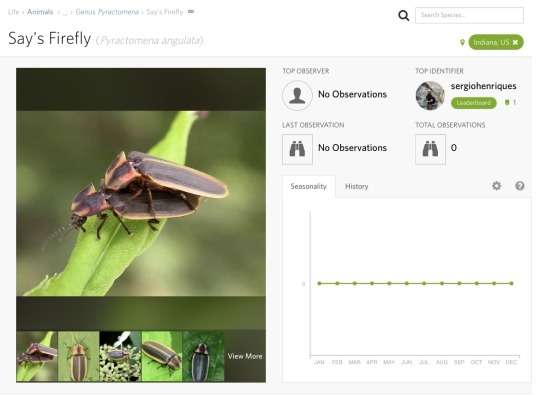
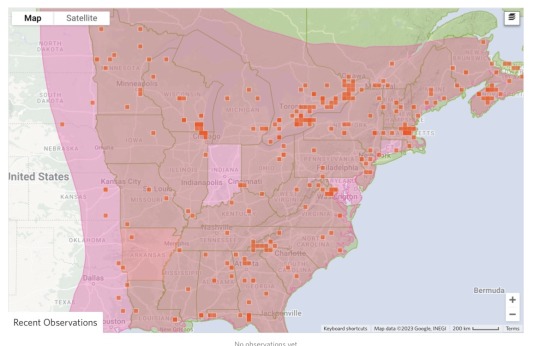
So even though this is extremely funny I'm giving your state the Common True Katydid instead. Large, loud, and easy to spot, these guys can frequently be heard chirping in trees. Not only do different populations have different rates of chirp, but the rate of chirp is also so predictably dependent on temperature that you could make an equation to tell the temperature based on chirp rate.
Iowa
Old: None
New: Westfall's Snaketail (Ophiogomphus westfalli)
Really cool clubtail dragonfly that's almost exclusively found in Iowa, Missouri, and Arkansas.
Kansas
Old: European Honeybee
New: Rainbow Scarab (Phanaeus vindex)
A kind of true dung beetle, they play an important role in removing waste. And although they don't roll waste like the stereotypical dung beetles, they are extremely pretty.
Kentucky
Viceroy Butterfly (Limenitis archippus)
This is fine.
Louisiana
Old: European Honeybee
New: Lovebug (Plecia nearartica)
Look, one of the southern states was going to get this one and Louisiana has a majority of the observations for them. Although annoying, it's things like having to scrape thousands of flies off your car that makes the Southern experience. Embrace it!
Maine
Old: European Honeybee
New: Brown Wasp Mantidfly (Climaciella brunnea)
I really wanted these guys to be somewhere on the list. Neither a wasp, mantis, or fly, these are predatory neuropterans related to lacewings. They have raptorial front legs (resembling a mantis) and their coloration resembles paper wasps that they live alongside. Weird, unique, and wonderful!
Maryland
Baltimore Checkerspot Butterfly (Euphydryas phaeton)
This butterfly might've been picked for the resemblance of the state flag. It's in decline in it's native range, so hopefully more awareness and consideration to state insects will help push conservation efforts.
Massachusetts
Old: Ladybug
New: Hornet Clearwing Moth (Paranthrene simulans)
Hornet mimic moth, the caterpillars feed on chestnuts and oaks. All lepidopterans (moths and butterflies) have modified hairs on their wings that form the "scales" that give this order their name. For this moth though, parts of it's wings don't have any scales so it more convincingly resembles a hornet. Underneath the scales, butterfly and moth wings look pretty much like any other insect's wing. Cool!
Michigan
Old: None
New: American Salmonfly (Pteronarcys dorsata)
The biggest salmonfly in North America. They make excellent fishing bait, and several fly fisherman use salmonfly lures to catch trout. Their nymphs are also an important indicator of water quality, with them being one of the first species to disappear in the presence of pollution or contaminants.
Minnesota
Old: Monarch Butterfly
New: American Giant Water Bug (Lethocerus americanus)
Also one of the ones that had to be on the list somewhere, and the Inat heatmap says Minnesota. Toebiters are part of the experience, and they are cool and ferocious looking.
Mississippi
Old: European Honeybee
New: Eastern Eyed Click Beetle (Alaus oculatus)
Click beetles have a cool adaption that allows them to launch themselves in the air to avoid predators. This makes an audible sound, hence their common name. The Eastern Eyed Click Beetle is one of the largest and most striking click beetles in the US, with large false eyespots on their thorax.
Missouri
Old: European Honeybee
New: Goldenrod Soldier Beetle (Chauliognathus pensylvanicus)
A soldier beetle that feeds on aphids and small plant pests, these beetles also eat pollen and nectar from flowers. They don't harm the flower, and though their common name reflects their preference for goldenrod flowers, they're also an important pollinator of the prairie onion (Allium stellatum). This is a native species of onion that grows from Minnesota to Arkansas.
Montana
Old: Mourning Cloak
New: Western Sheep Moth (Hemileuca eglanterina)
Mourning Cloak butterflies do technically work for my criteria, but I wanted to showcase some more regional insects in this as well, as Mourning Cloaks are found throughout North America and Eurasia. The Western Sheep Moth is an absolutely stunning giant silk moth, found throughout the western United States. Although not as big as some other silk moths, the bold orange and black coloration on these make them absolutely stand out.
Nebraska
Old: European Honeybee
New: Blowout Tiger Beetle (Cicindela lengi)
A tiger beetle with unique patterns, these guys are active predators and are particularly difficult to spot because they run extremely quickly. They seem to be pretty cold tolerant and exist from Colorado up into Canada.
Nevada
Vivid Dancer Damselfly (Argia Vivida)
This damselfly was picked as Nevada's state insect because it's widespread throughout the state and matches the state colors, silver and blue. That gets my seal of approval!
New Hampshire
Two-spotted Lady Beetle (Adalia bipunctata)
This is fine.
New Jersey
Old: European Honeybee
New: Margined Calligrapher (Toxomerus marginatus)
A pretty hoverfly, they strongly resemble bees in both looks and behavior. Larvae feed on common plant pests such as thrips and aphids, while the adults sip nectar and pollinate flowers. These helpful attributes make it something the Garden State can appreciate!
New Mexico
Tarantula Hawk (Pepsis grossa)
New Mexico wins the official state insect list by a landslide. Not only is the tarantula hawk a super cool and formidable insect to showcase, but New Mexico's state butterfly (Sandia Hairstreak) was discovered in New Mexico. No notes 10/10!
New York
Nine-spotted Lady Beetle (Coccinella novemnotata)
A native species of lady beetle that's been in decline in recent years, New York is one of the last remaining states where they've been spotted. I also appreciate that New York designated a specific ladybug species instead of just saying "Coccinellidae species".
North Carolina
Old: European Honeybee
New: Eastern Rhinoceros Beetle (Xyloryctes jamaicensis)
A large native species of rhinoceros beetle. They breed in ash trees, and are under threat due to competition from the Emerald Ash Borer.
North Dakota
Old: None
New: Nuttall's Blister Beetle (Lytta nuttalli)
As with all blister beetles, these guys have a chemical defense. Unlike the more famous Bombardier Beetle thought, instead of being black and red they are iridescent red/purple and green.
Ohio
Old: Ladybug
New: Bald-faced Hornet (Dolichovespula maculata)
Look, when the one thing everyone knows about your state is that it sucks, it's time to lean into it. Bald-faced hornets, everyone knows them, everyone has opinions about them, and they get a lot of attention. I don't think I have to explain this one anymore.
Oklahoma
Old: European Honeybee
New: Giant Walking Stick (Megaphasma denticrus)
The largest insect in the United States. Being a native walking stick, they're less damaging than the imported invasive walking sticks that are heavily controlled.
Oregon
Oregon Swallowtail Butterfly (Papilio oregonius)
Oregon in the common name and in the species name, and also has a stamp!
Pennsylvania
Pennsylvania Firefly (Photuris pensylvanica)
Pennsylvania in the common name and species name. If fireflies weren't already on this list I would've made sure to include them somewhere.
Rhode Island
American Burying Beetle (Nicrophorus americanus)
When I saw this on the list I was worried. American Burying Beetles are one of my favorite insects, but they're extremely endangered now. I also thought they existed more in the midwest, so I was worried I would have to change this one because it violated the "native to the region" rule. But! To my pleasant surprise, not only did their historic range extend to Rhode Island, but there is actually a carefully maintained wild population on Block Island. They estimate between 750-1000 individuals live there, making it one of the few remaining places where the American Burying Beetle still exists. Excellent work Rhode Island!
South Carolina
Carolina Mantis (Stagmomantis carolina)
This is fine. I wanted to give South Carolina the Palmetto bug but they're actually not native.
South Dakota
Old: European Honeybee
New: Golden Northern Bumble Bee (Bombus fervidus)
"Save the bees" should really be focused on native pollinators, many of whom are in decline. There are a lot of species of native bee you can feature as a state insect, with the Golden Northern Bumble Bee being a particularly large and striking species.
Tennessee
Old: Firefly and ladybug
New: Black-waved Flannel Moth (Megalopyge crispata)
Seriously look them up, these guys are adorable.
Texas
Old: Monarch Butterfly
New: Rainbow Grasshopper (Dactylotum bicolor)
It was really hard to pick an insect for your state. The Texas Unicorn Mantis was a contender but I eliminated it because it's really only found in the southern part of Texas, so it was between the Rainbow Grasshopper and the Eastern Velvet Ant (or Cow Killer). I went with the Rainbow Grasshopper because it's more wide spread and common, and occurs everywhere except the east part of Texas. But the Eastern Velvet Ant only occurs on the east part of Texas, maybe you should get an East and West Texas insect? I also thought more people have probably already heard of the Eastern Velvet Ant than the Rainbow Grasshopper, which is a shame because they're super interesting to look at.
Utah
Old: European Honeybee
New: Mormon Cricket (Anabrus simplex)
Mormon Crickets are not true crickets, and instead closer related to katydids. Their common name comes from an early account of Latter-day Saint settlers in Utah. In 1848, a swarm of Mormon Crickets decimated the settler's crops, so the legend goes that they prayed for relief from this plague of insects. Later that year, a swarm of gulls appeared and ate the crickets, thus saving the crops. This is recounted in the "miracle of the gulls" story. To recognize their contributions, the California Gull is commemorated as Utah's state bird. I thought it was fitting then that the Mormon Cricket be recognized as your state insect.
Vermont
Old: European Honeybee
New: Long-tailed Giant Ichneumon Wasp (Megarhyssa macrurus)
A pretty wasp with an extremely long ovipositor, these wasps are common in deciduous forests across the eastern United States. They can't sting, and instead use their long ovipositor to stab into tree bark and deposit eggs on the horntail larvae that burrow into the trees.
Virginia
Old: Eastern Tiger Swallowtail Butterfly
New: Giant Stag Beetle (Lucanus elaphus)
A large stag beetle native to the Eastern United States. Although not as well known as their similar looking fellow stag beetles from Japan, these guys are a lovely chocolate brown instead of solid black. Like most stag beetles, they breed in decaying wood.
Washington
Green Darner Dragonfly (Anax junius)
I imagine this was chosen because it matches the flag.
West Virginia
Old: European Honeybee
New: Appalachian Tiger Beetle (Cicindela ancocisconensis)
This tiger beetle likes hilly terrain. As with all tiger beetles, they can be hard to spot because they run across the ground in search of prey. They are fast! But this can make it more rewarding when you finally catch up to one.
Wisconsin
Old: European Honeybee
New: Phantom Crane Fly (Bittacomorpha clavipes)
Don't believe old wive's tales about crane flies drinking gallons of blood, they are nonbiting. Those striking black and white legs are hollow, and are held out when they fly, making an extremely distinct sight that's been likened to sparklers or snowflakes.
Wyoming
Sheridan's Hairstreak (Callophrys sheridanii)
This is fine.
#insect#insects#state insect#long post#list#text post#entomology#bugblr#invertebrates#invertiblr#inverts#invert
190 notes
·
View notes
Text
Earth day is coming up! A lot of people will be hosting tree planting events, or giving away plants. This is a kind and lovey thing to do!
But let’s always make sure they are native species.
We often think “if it’s a plant, planting it is good for the earth”. But this is not the case. The health of the planet requires diverse, healthy, and functional ecosystems. And one of the most disastrous things to the health of any ecosystem is planting invasive plants. We can’t always tell if a plant will become invasive in an area, but we can know that non native plants carry that risk, and native plants do not.
And even if we plant something nonnative that doesn’t spread, we still might be creating a net- negative situation. Plants take up space, and often resources, to upkeep. Using those spaces and resources on non native plants is not helping the earth…it’s a part of what is destroying it.
So, this earth day, plant things that are native to your area 💚
50 notes
·
View notes
Text
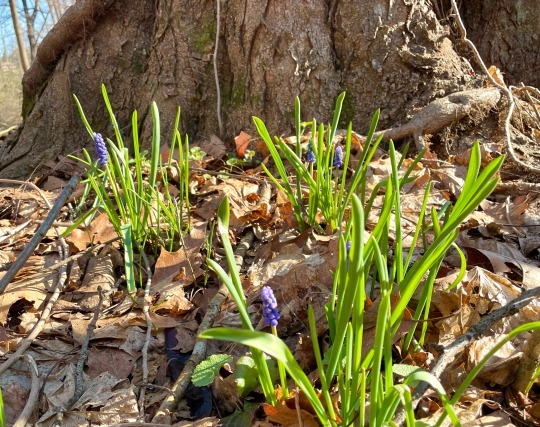
Grape hyacinths at the base of an old shagbark hickory.
#pennsylvania#nonnative plants#grape hyacinth#shagbark hickory#march#spring#plantblr#plants#yes that vine is poison ivy
235 notes
·
View notes
Note
Hi! I saw a weird plant the other day (Vancouver area, BC, Canada) and was wondering what it is and why it reflects sunlight in such a weird way! Came up short in trying to Google the phenomenon and asking around yielded nothing.
On the second photo it’s in the same lighting at the same time(within seconds) as the first, just from the side. Despite being glossy green, the light reflection on the leaves ended up hot pink. All the other plants in the area were unremarkable.


I hate to say it, but we talked about this one, and came to the conclusion that it's probably Prunus laurocerasus, called cherry laurel or common laurel. It's a hedge plant that's nonnative in North America, being native to southeastern Europe and southwestern Asia. The cultivar "Schipkaensis", also called schip laurel or a schipka laurel, is a popular hedge plant in the western part of the US and Canada. We think it's Prunus laurocerasus based on the leaf shape, the shininess of the leaf, and racemose floral arrangement - plus, where you found it, in the city.
#asks#Prunus laurocerasus#cherry laurel#common laurel#nonnative plants#I think the pink shine is probably due in part to the wildfire smoke#but I'm not sure#This would be because of Mie scattering which also causes the redder sunsets
15 notes
·
View notes
Text
Cape Honeysuckle is an Interesting Plant with Beautiful Flowers
Blushing Trumpet
When I was out at Watermelon Pond, I found more than one pretty, trumpet shaped flower that was blooming even though it was late in the year. This one was growing along the fence at my friend Mary’s house. Instead of yellow, like the Carolina jessamine, that I wrote about in my last post, this one was a bright reddish orange. The color first drew me in to look at the flowers,…
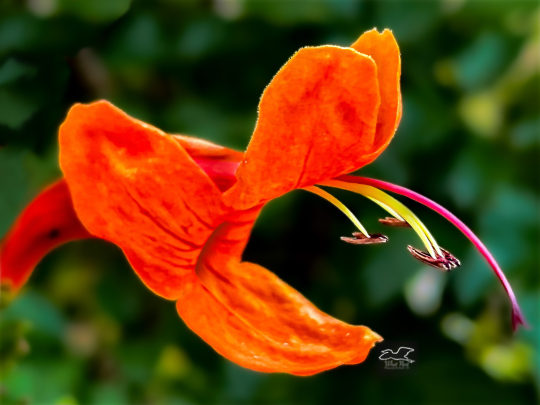
View On WordPress
#beautiful flowers#bright orange flowers#Cape honeysuckle#Cape Tecoma honeysuckle#colorful flowers#false honeysuckles#Florida flowers#flower photographs#flower photography#flowers#nonnative flowers#nonnativehoneysuckle#orange flowers#ornamental flowers#ornamental plants#photography#trumpet shaped flowers
1 note
·
View note
Text
What Kind of Plants to Add
This is my sixth post in a series I’ll be making on how to increase biodiversity on a budget! I’m not an expert–just an enthusiast–but I hope something you find here helps!
I’d love to be able to give a quick and easy list of things to add, but frankly I can’t do that. I can strongly encourage you, however, to look at these categories of plants and do further research to discover what’s native to your area, so you can plant things that’ll have the most impact in your particular area.
With that being said, I will mention a few plants as examples. This is in no way, shape, or form me telling you that you have to or even should buy these specific plants. Not every plant works well in every place in every garden, not to even mention across countries. Above all, if you’re wondering what plants you should be adding, I can wholeheartedly say plants that are native to your area--or at least nonnative non-invasive.
Flowers
Flowers are some of the most common ways people work to increase biodiversity in their gardens, and who can blame them? Seeing pops of color out your window, and directly seeing the impact via butterflies and bees visiting the garden? It’s a win-win for us and the wildlife!
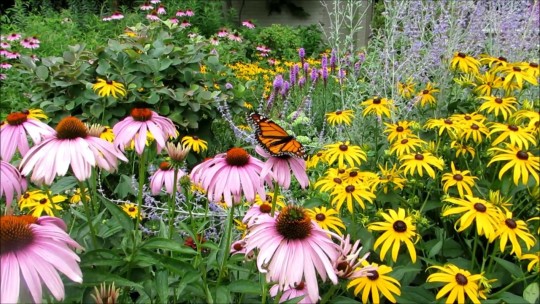
Flowers--especially native wildflowers--are a quick, easy, and cheap way to increase wildlife traffic in your garden. Perennial gardens are more likely to get you the most bang for your buck, as they’ll come back year after year if you treat them well. But don’t dismiss annuals--if you get ones that easily reseed, they’ll eagerly return on their own! If you can, do your best to ensure that the flowers you plant all have different blooming periods--that way, your garden can support wildlife throughout the year instead of for just one brief season.
Flowers are environmental super boosters. Their nectar and pollen can feed insects and birds, their stems and leaves can provide nesting materials for all sorts of creatures, and their seeds are a popular food source among birds at all times of the year.
Climbing Plants
Climbing plants can be fantastic options for maximizing your impact. If you have limited ground space, growing up can provide interest as well as additional habitat for all kinds of creatures.

Training plants up a trellis, fence, or bare wall offers food, shelter, and habitat. Trumpet vines, passionflowers, honeysuckles, and more will provide sweet nectar for pollinators as well as nesting and hiding spaces for other wildlife like birds, bugs, and lizards. Do note that in some cases, climbing plants can actually affect the structural integrity of walls and roofs if allowed to climb too much and too far along a house, so be careful.
Bushes/Shrubs
Bushes provide shelter for creatures, which then provides hunting grounds for other animals. Their fallen leaves and petals can be food and shelter for detritivores, amphibians, reptiles, and small mammals--and they also provide good cover for moving around the garden, for creatures who like to stay hidden. They can be a bit more pricey to obtain--unless you get cuttings or seeds and are willing to wait--but they’ll definitely be worth it, and they’re typically low-maintenance once they’re established.
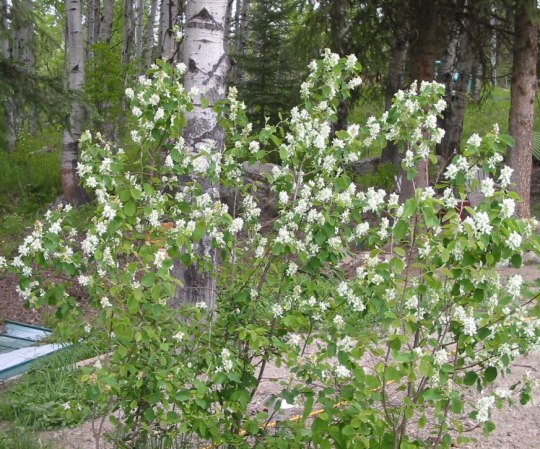
Bonus points if you get a flowering and fruiting bush, like bottlebrush, serviceberry, lilac, or others. This’ll make your bushes not only a place of shelter, but a food source as well--and depending on the kind you pick, may be food for you too! Making a garden border with a series of bushes can be a great option to providing lots of habitat, if you can manage it.
Shrubs with pithy or hollow stems are excellent options for supporting solitary bees. Some examples you could look into are elderberry, raspberry, blackberry, or sumac.
Trees
Trees have a high up-front cost and take awhile to grow, but once they’re settled in place they provide crucial habitat to all kinds of creatures! Insects will be attracted to flowers they may provide, or to nest in the wood. Others may eat the leaves as food, or use them as nesting materials. Birds will perch and nest in trees, and feed off the fruits and seeds and insects that also use the tree. Squirrels also use trees as nesting places, piling up dead leaves into huge clusters to raise their young in, and will absolutely feast on any nuts the tree may provide. Mice, badgers, and more will feast on fallen fruits or seeds, and bats roost in the trunks when given the chance. Detritivores eat fallen leaves and decomposing fruits, providing further food for hunting creatures. Trees can also be good for us--they help block out noise and air pollution, and are the poster child for taking CO2 and making it breathable oxygen. Not to mention they can provide plenty of food for us, too. Nesting grounds, hunting grounds, shelter from weather, and more--trees are, in my opinion, likely to be the best way to boost biodiversity long-term. If you can get your hands on a sapling for cheap and can care for it for awhile, I’d definitely give it a shot! Make sure the tree won’t get too big for where you’re growing it, though--you’ve definitely gotta plan for the long-term before you plant any.
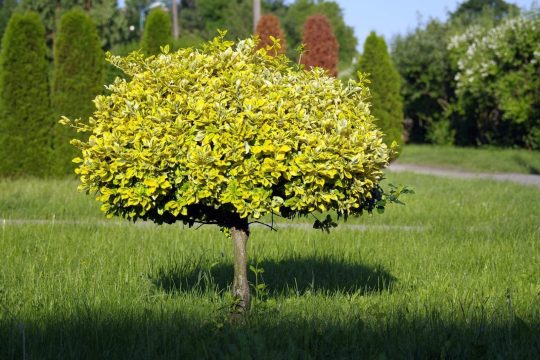
Some trees can be grown in containers. Though they won’t become gigantic branching behemoths, they’ll still do their part to support all the life that depends on them. Growing a tree from seed may take awhile, but could be an easy option to getting one if you have the patience--the trees are more than happy to help you, as they drop tons of seeds and fruit in fall for you to gather.
Groundcover
Bare soil is the enemy of microbial life in the soil, and while small pockets of bare soil can be great nesting places for bees and other insects, having swaths of empty soil should be avoided. Groundcover plants grow low to the ground in a sprawling habit, and will often spread quite easily on their own. This is a great way to provide shelter, keep soil temperatures cool, block out weeds, and give your soil life a chance to thrive.

Sometimes, ground covers don’t even have to be planted in the ground. Shallow-rooted plants like succulents, ferns, and alyssum can be planted into cracks in stone walls, and moss can be planted by making moss graffiti and painting it onto a surface. As with climbing plants, do make sure that you don’t cause extra damage to important walls and housing foundations.
Host Plants
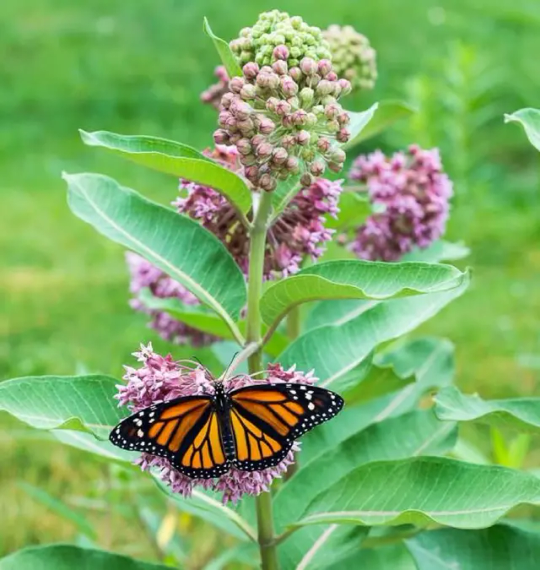
Host plants get their own section, because plants of all kinds can be host plants for different creatures! It’s common to think only flowers can be host plants in the beginning, but in reality, many bushes and trees are host plants to dozens of species of butterflies and moths. Honestly, I feel that factor's not talked about enough. Look up what insects live in your area and what kind of host plants they need, and plant some if you can! Bonus points if you can plant a variety of them--I know that there’s hundreds of kinds of milkweed, each one flowering and leafing up around different times of the year. Planting several varieties of milkweed, then, would provide monarchs with food through several seasons, allowing many more of them to grow up in your garden!
Nectar Plants
Plants that provide nectar to insects is a great foundation to increasing biodiversity! This is, of course, many native wildflowers (and even nonnative wildflowers, though be sure they aren’t invasives who’ll do more harm than good), but many native bushes, vines, and trees will also provide nectar to hungry pollinators!
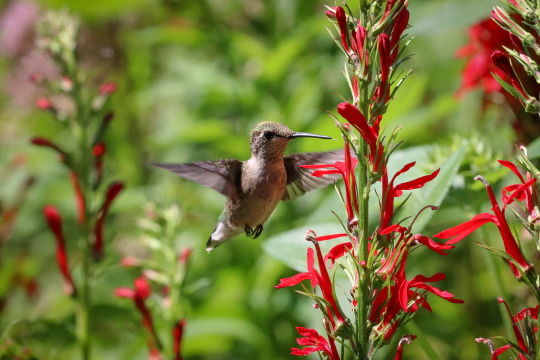
Keystone Species
To be frank, some plants can have a bigger impact than others in a landscape. By all means, every bit helps, but if you want to boost biodiversity quickly there are a few plants that can essentially serve as the backbone of local ecosystems that you can grow in anything from a balcony pot to a small patch of your backyard. These plants can be different depending on where you are, so do your research to find out what would be best to grow in your area. If you can’t get them all? That’s alright! But even hitting just a few of these target species really can do a lot.
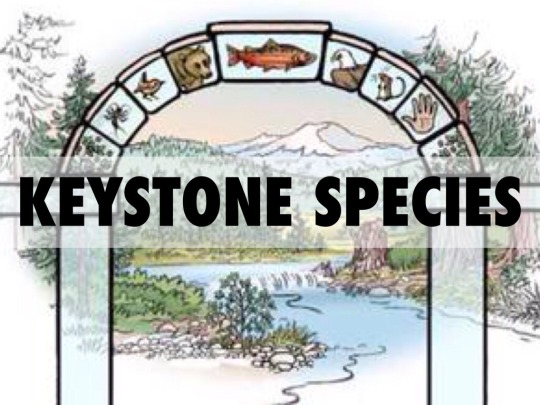
That’s the end of this post! My next post is gonna be about things to keep in mind/continue to do once you get plants in the ground! Until then, I hope this advice was helpful! Feel free to reply with any questions, your success stories, or anything you think I may have forgotten to add in!
#biodiversity#solarpunk#gardening#outdoor gardening#ani rambles#out of queue#the biodiversity saga#sorry its been 2 months since I last posted to this series#I literally have everything drafted out I just got Busy because maannnnnnn animating a grad school capstone project all by yourself....#i should really start using my youtube channel to post my animations but they never feel Done so I just Dont#i dont have as many links in this one because... they weren't in the draft and any tumblr posts that came to mind I couldn't hunt down#either way i hope this was Helpful and Lit and All That Jazz#I might just post the other parts tomorrow so I can stop having that hanging over my head#and so I can get my sources masterpost out there so people can like. see I'm trying my best not to just talk out of my ass#anyways see yall
157 notes
·
View notes
Text
Annual reminder that the bees that need help are native bees, not honey bees. Honey bees are both non-native to the Americas and they do compete with native bees. On top of that, they can also spread diseases to native bees (along with commercially raised bumble bees).
Bumble bees are one of the groups of native bees that are struggling. Bumble bees tend to be generalists, live in small colonies that restart from a single queen each year, and are excellent pollinators.
How to help/things to tell city hall:
Bumble bees are generalists and need pollen and nectar sources both early and late in the year. Finding native plants that fill these bloom times is great, but planting carefully considered nonnative, pollinator-friendly bloomers is an additional option.
Habitat fragmentation and loss is one of the biggest problems facing bumblebees, so replanting areas with blooming plants can make a huge difference. Think about if all government building grounds were intentionally planted to support bumblebees and other native bee species? What if we changed the code so corporate, park, apartment, and college campus landscaping had to contain a certain amount of native & pollinator friendly species?
Climate change is changing bloom time, so planting a diversity of native, near native, and non-native but non-invasive plants may be a good strategy, especially when focusing on very early and late bloomers.
Pesticides have also damaged native bee populations, so finding strategies to reduce or eliminate pesticide use is an important step.
The tips above are specifically for native bumble bees. There are a huge number of native bees, and while bumble bees are generalists, not all of the native bees are. Unfortunately, this is a fairly understudied area, but they are obviously more vulnerable than generalist species. One important thing you can do for specialist native bees is to look up the plants they depend on, and grow those that are native to your area (and encourage others and larger land owners to do the same. They also need nesting sites, so keep that in mind while developing your garden plan.
Here is the best source I've found for finding specialist bees and their plants: https://jarrodfowler.com/pollen_specialist.html If someone has a better one, please share.
If you click through you can find lists for Western, Central, and Eastern US specialist bees. Some are more specialist than others, and some do in fact use dandelions.
133 notes
·
View notes